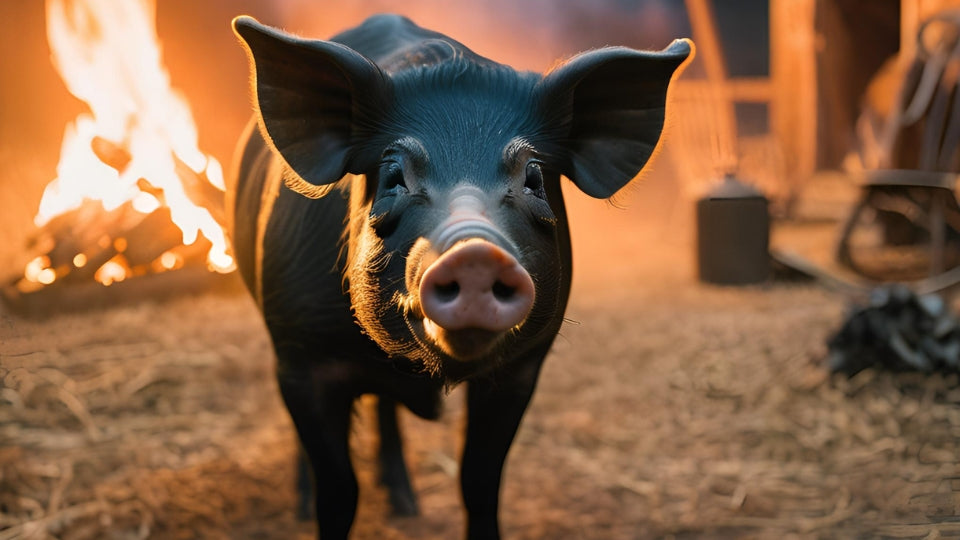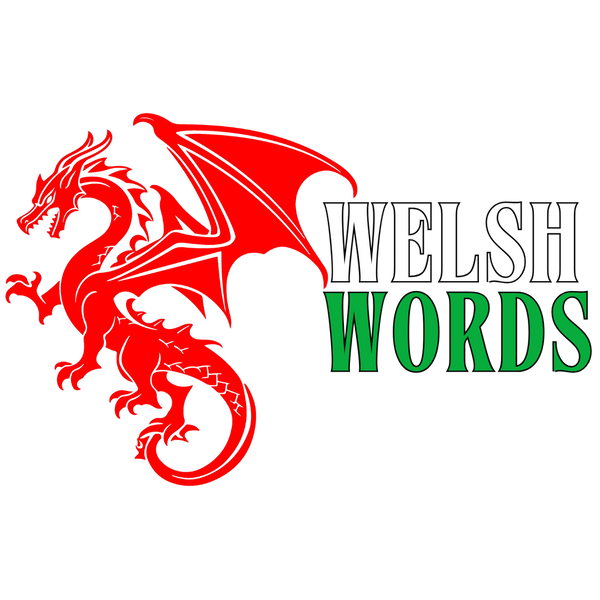
The Tailless, Black Sow - Hwch Ddu Gwta
One terrifying custom connected with Calan Gaeaf (the first day of winter) is that of the Hwch Ddu Gwta, a tailless, black sow. A reminder of the darker and more sinister, and perhaps more ominous, origins of these seasonal festivals, associated with the beginning of the darker, bleaker months of winter, as the cycle of the year moves into its colder months.

The Name and Its Origins
Pronounced ‘hoo-hk thee goo-tah’ the Hwch Ddu Gwta, a terrifying Welsh creature. The name sounds much as it is written: Hwch meaning ‘sow’. Ddu means ‘black’, and Gwta means something being ‘tailless’. Collectively, it evokes the picture of an evil-looking black pig, made all the more eerie by its lack of a tail - a trivial but unsettling feature that reflects the utterly unnatural character of the creature.
This grotesque creature is said to roam the Welsh countryside on Noson Calan Gaeaf (the eve of Calan Gaeaf, October 31), in pursuit of anyone unfortunate enough to be the last person to leave the village bonfire.

The Legend of the Black Sow
On the night of Calan Gaeaf, when the veil between the living and the dead is at its thinnest, people lit bonfires to keep away wandering spirits. These bonfires marked the moment for one of the most terrifying parts of the festival - the Hwch Ddu Gwta The sow was said to roam the night with the Ladi Wen heb ddim pen (the white lady without a head). As the light was fading, one of the local man would grab a pig skin and run after the children from the village bonfire. They were told that the feared Hwch Ddu would catch the last child home that night. It was used as a scare game, but also to get children home on time and to teach them the dangers of wandering too far. One particular rhyme shows how the last child out on Nos Calan Gaeaf was at risk of being eaten by the fearsome beast:

The legend of the Hwch Ddu Gwta is a fearsome one, but specific details like it chasing people on Noson Calan Gaeaf (Halloween Eve) aren't as widely documented. Welsh folklore was passed down orally, which means details could have been lost or altered. Additionally, different regions have variations of the legend.
Echoes in Modern Halloween
Nowadays, Halloween in Wales is broader and more commercialised, like elsewhere on the planet. The scary costumes, decorations and trick or treating all mirror ancestral rituals designed to keep rogue spirits at bay. The Hwch Ddu Gwta, however, has been over-shadowed by more contemporary terrors such as vampires, ghosts and witches.

Preserving the Legend
With the modern trick-or-treating tradition taking hold and the celebration of Halloween becoming the main focus of the season, I hope that these peculiarly Welsh stories, such as that of the Hwch Ddu Gwta, are not forgotten. Just as there is something valuable in the toils of the soil and the memory of the cycle of the seasons, there is something equally vital in a legend that remembers the fragility of life.
With Calan Gaeaf and Halloween at our door every year, we should continue to pass on these old tales, hoping that the children of tomorrow will be inspired to keep on telling them, so that the folklore of Wales doesn’t perish with the loss of its elders. So next time you light a bonfire or watch the flames flicker against the darkening sky, spare a thought for the Hwch Ddu Gwta. Maybe, just maybe, it’s still out there - waiting for the last one to leave the fire.
Test Your Knowledge: Hwch Ddu Gwta Quiz 🐗
Thanks for reading! How well did you pay attention? Answer these questions about the Hwch Ddu Gwta and its connection to Calan Gaeaf in the comments below. Share your thoughts or any experiences you have with these legends. Happy Halloween!
1. What does the name "Hwch Ddu Gwta" mean?
- A) The black tailed dragon
- B) The tailless black sow
- C) The headless white sow
- D) The black-winged beast
2. On what night is the Hwch Ddu Gwta said to roam the Welsh countryside?
- A) Nos Galan Mai (May Eve)
- B) Nos Galan Gaeaf (Halloween Eve)
- C) Nos Nadolig (Christmas Eve)
- D) Nos Calan Awst (Harvest Eve)
3. What was the purpose of the Hwch Ddu Gwta legend in the village?
- A) To scare adults into staying home
- B) To encourage children to gather crops
- C) To get children home on time
- D) To teach children how to light bonfires
4. Which other figure was said to roam alongside the Hwch Ddu Gwta on Nos Calan Gaeaf?
- A) Ladi Wen (The White Lady)
- B) The Tooth Fairy
- C) The Headless Horseman
- D) The Gwiber (Welsh serpent)
5. How has the tradition of the Hwch Ddu Gwta changed in modern Halloween celebrations?
- A) It has become a popular costume
- B) It is overshadowed by more contemporary characters like vampires and witches
- C) It is still a common theme in Welsh villages
- D) The legend has completely disappeared
Enjoy testing your knowledge and exploring the eerie tales of Welsh folklore!


1 comment
It is up to us to keep the mastery, magic and wonder of language to blossom! I learned today about a black tailless saw, I will make up a game of tag where you say the rhyme first and as soon as the last word said the chaise will begin! It will encourage memorization, and the action still will be true;) It is up to us to revive old and start new traditions!